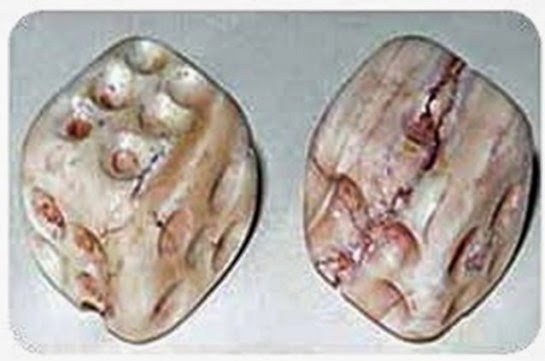Iran, Burnt City is one of the most important prehistoric sites of the country which was well developed during the third millennium BCE.
Spreading over a 300,000 hectare
area, Burnt City is recognized as mainland-Iran’s largest prehistoric
site. The city experienced four stages of civilization and was burnt
down three times, which is why it was named ‘Burnt City.’ Discovery of
hundreds of historical sites including 166 satellite villages together
with large numbers of archaeological relics, skeletons, and ancient
structures in the archaeological site of Burnt City makes it holder of
an unparalleled record in the history of archaeological activities in
Iran.
Judging by the artifacts recovered
in the area, the inhabitants seem to have been a race of intelligent
people who were both farmers & builders of various crafts. So far no
military ware has been discovered, suggesting the peaceful nature of
the residents. What is really strange about burnt city is the fact that
it has no connection to any other old civilizations in the area, as if
it completely came from elsewhere.
One of the prominent relics found
in the Burned City is a skull that according to the anthropological
studies is the first evidence of brain surgeries in prehistoric Iran.
Recent archaeological studies, has led into new discoveries in the
architectural style of this city’s buildings as well as finding the
biggest pre- historic clothe collection in the Middle East
Even more recently, Burnt City has been identified as one
of the rarest ancient cities in which women were in charge of their
family’s financial affairs!
Before the Burnt City, some 137 historical hills had been
identified by this Center in the vicinity of Burnt City historical site.
Archeologists believed that most probably these hills were settled by
the Burnt City inhabitants during the ancient times. The discovered
historical sites are located 6-8 kilometers from the Burnt City and some
cultural evidence such as broken clays similar to those discovered in
Burnt City have been unearthed in these hills.
Archeologists have also found a well-preserved building in
the residential area, covering around 80 square hectares of the total
151 square hectares of the ancient city.
Toward the end of the second millennium BC, Burnt City came
to a cultural standstill; and archeological evidence shows that this
ancient civilization of the Eastern plateau of Iran somehow vanished
from the face of the earth at the beginning of the first millennium BC.
Last year there was the rather striking discovery out of Tehran of a 5000 year old "animation" of a goat found on an earthenware bowl. Like many, I found this fascinating and recently wanted to take a closer look at the actual sequence to see what its structure looked like. This ended up becoming a bit of an internet treasure hunt for me. First, I found the animated clip they had created from it:
However, upon closer inspection, this seemed really odd. First off, why are there two trees if this was going around a bowl? Shouldn't that be one tree, that just becomes ancillary to the next "panels" representation? Of course, that's not a big deal...
But, when I dissected the animation, things really got interesting. It's made of 9 images, yet it features several repeated goat images (watch for the white dot on the goat's behind which appears and disappears). The way this animation was made simply took the overall background (note that the trees never change), then cut and pasted the goat figures several times in different places!
Upon further searching, I found this great page showing the archiving of the bowl, which actually looks like this:
This eyeball belongs to a sturdy woman who was between 25
to 30 years of age at the time of death. Skeletal remains of the woman
were found in grave number 6705 of Burnt City’s cemetery. The material
this artificial eyeball is made of has not yet been determined.
However, at first glance it seems natural tar mixed with
animal fat has been used in making it.” Initial studies on the eyeball
also suggest formation of an abscess in the eyelid due to long-term
contact with the eyeball. Moreover, remaining eyelid tissues are still
evident on this artificial eyeball.
Even the most delicate eye capillaries were drawn on this
eyeball using golden wires with a thickness measuring less than half a
millimeter. There are also some parallel lines around the pupil forming a
diamond shape. Two holes are also seen on the sides of this eyeball to
hold it in the eye socket. A number of clay vessels, ornamental beads, a
leather sack, and a bronze mirror have also been found in the grave of
this woman






















0 comments:
Post a Comment